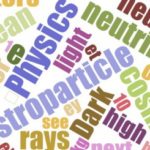
ICRR signs a MOU with KEK on the Hyper-Kamiokande proto-collaboration
3 February 2015
ICRR News Release – ICRR signs a MOU with KEK on the Hyper-Kamiokande proto-collaboration

3 February 2015
ICRR News Release – ICRR signs a MOU with KEK on the Hyper-Kamiokande proto-collaboration

2 February 2015
TRIUMF Research Highights – Testing Gravity Workshop

30 January 2015
RedOrbit – Low-mass particle could lead to dark matter detection

30 January 2015
ESA Planck News Release – Gravitational Waves remain elusive

29 January 2015
Chandra Press Release – New Exhibit Launches to Celebrate the International Year of Light

22 January 2015

20 January 2015
SISSA Press Release – Inside the big wormhole (PDF document)

20 January 2015
Massachusetts Institute of Technology News – Particles accelerate without a push

19 January 2015
RAS Pres Release – Cosmic radio burst caught red-handed

16 January 2015